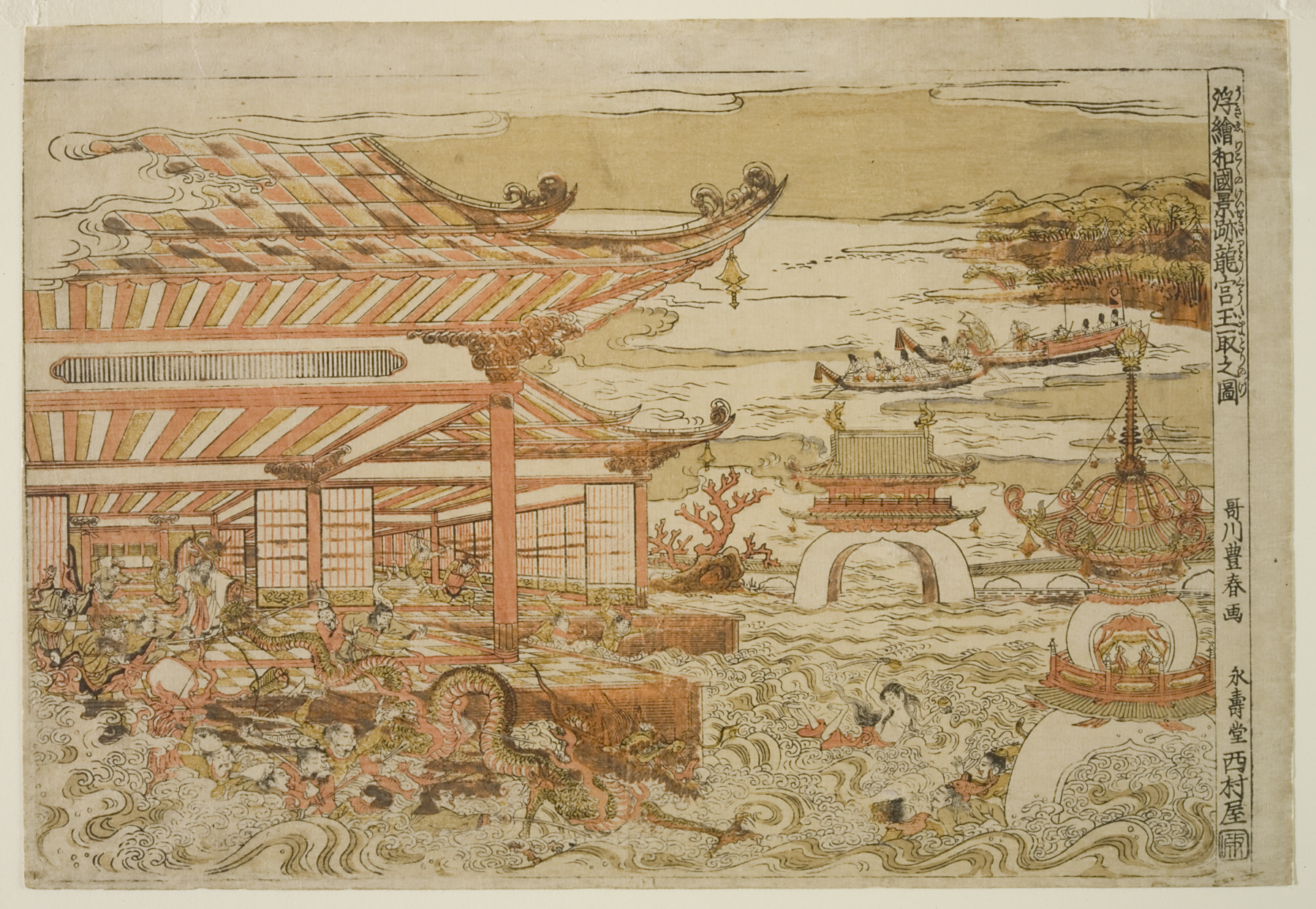Ryūgū Tamatori no zu (Stealing the Pearl from the Palace of the Dragon King), Utagawa Toyoharu
Artwork Overview
Utagawa Toyoharu, artist
1735–1814
Ryūgū Tamatori no zu (Stealing the Pearl from the Palace of the Dragon King),
1770s, Edo period (1600–1868)
Portfolio/Series title: Perspective Pictures of Japanese Scenes (Ukie Wakoku Keiseki)
Where object was made: Japan
Material/technique: color woodcut
Dimensions:
Image Dimensions Height/Width (Height x Width): 247 x 363 mm
Image Dimensions Height/Width (Height x Width): 9 3/4 x 14 5/16 in
Sheet/Paper Dimensions (Height x Width): 266 x 390 mm
Sheet/Paper Dimensions (Height x Width): 10 1/2 x 15 3/8 in
Mat Dimensions (Height x Width): 14 x 19 in
Image Dimensions Height/Width (Height x Width): 247 x 363 mm
Image Dimensions Height/Width (Height x Width): 9 3/4 x 14 5/16 in
Sheet/Paper Dimensions (Height x Width): 266 x 390 mm
Sheet/Paper Dimensions (Height x Width): 10 1/2 x 15 3/8 in
Mat Dimensions (Height x Width): 14 x 19 in
Credit line: William Bridges Thayer Memorial
Accession number: 1928.7519
Not on display
If you wish to reproduce this image, please submit an image request

